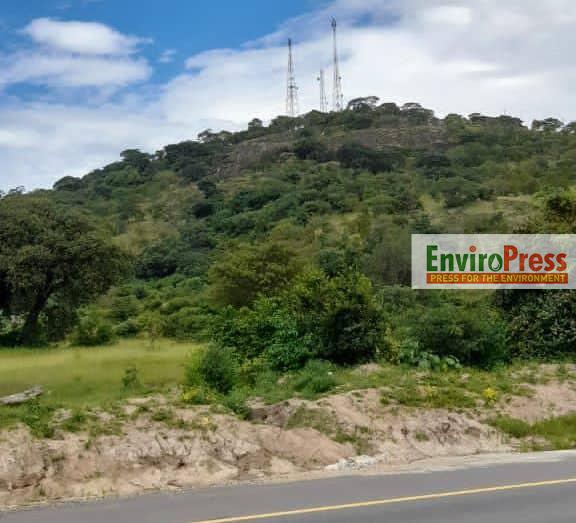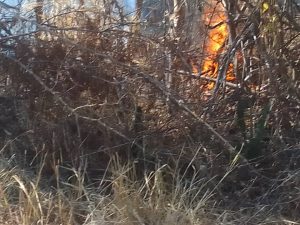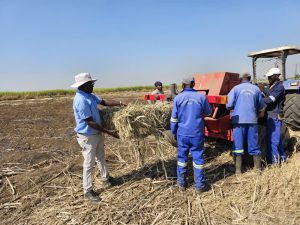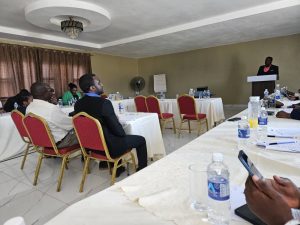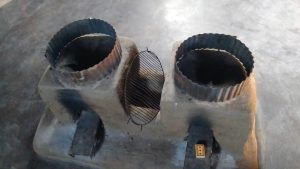…Mandiwanzira’s doomed infrastructure sharing idea a lost conservation opportunity
Moses Ziyambi
When the then Minister of Information and Communication Technology and Courier Services, Supa Mandiwanzira pushed his idea of ‘infrastructure sharing’ to the country’s three mobile network operators, he came under serious criticism for lacking rationale.
While Mandiwanzira’s obsessive arguments on infrastructure sharing were largely economic and definitely political, many conservation advantages could have been derived had the proposals received buy-in from all players.
This has become apparent in view of the people of Buhera and Gutu districts who now report more cases of hyenas invading and attacking their communities than ever before.
They cite the proliferation of cellphone network boosters as the reason for the spike in this form of human-wildlife conflict.
“The hyenas are scared by the towers especially during the night when they flick bright red. So they have lost both their habitat and the prey on which they used to survive there in the bush. They now invade our villages and attack our goats and calves,” said Ruramai Rukuni who lives in the Nyazvidzi area which borders Gutu and Buhera.
Rukuni said some of the hyenas were driven from as far as Gombe Mountain near Marovanyati Dam in Buhera when Econet, Telecel and Net*One built competing base stations on the crest.
She said the increase of hyenas in the villages began in the early 2010s when the country’s mobile telecommunications began to seriously advance following the achievement of national macro-economic stability which came with the dollarization of the economy beginning in 2009.
During this period, many new towers with both 2G and 3G capabilities were set up in the mountains; with the three companies competing to tap into the vast market potential offered by large parts of the country that lacked coverage.
In 2013, Buhera South Member of Parliament (MP) Joseph Chinotimba ordered bus operators plying routes in his constituency to change their night operating hours in order to protect villagers from further hyena attacks.
This followed a spate of savage hyena attacks which had landed many villagers in hospitals nursing serious injuries.
It is also during this period that Mandiwanzira sought to force the three telecoms players to combine forces where necessary, rather than compete needlessly all the time.
He sought to force the companies to share the towers and other related infrastructure ostensibly to avoid ‘duplication of investments’, thereby saving the country the much-needed foreign currency which the companies spent importing components.
“As much as possible, we must save hard currency and not import things that are already in the country. We have cases of operators having three towers on top of the mountain. They have three generators and each company will have to create a road going up there.
“Very often each one of them sends a truck with diesel to refill the generators. And yet one tower can be designed to look after three networks or even more.
“We therefore need to reduce the cost of importing steel used to build towers; we reduce the cost of importing diesel. So the cost savings from a country perspective are also huge,” Mandiwanzira was quoted as saying back in March 2016.
His words seemed to harbour no malicious intent, especially when one also considers the environmental benefits of infrastructure-sharing whereby fewer trees are cut, and less diesel is burnt.
However, Econet Wireless, the biggest player, vociferously opposed Mandiwanzira, claiming it was disingenuous and unfair to expect a company to share infrastructure with smaller competitors, which the government controlled, and which did not have much to offer.
As a result of these disagreements, Mandiwanzira did not really succeed, and the ‘duplicated investments’ continue to this day, with towers competing for space in the mountains.
This is the kind of infrastructure that is leading to increased human-wildlife afflicting Rukuni’s village in Nyazvidzi as well as many other villages in the country.
In the Munyikwa area of Gutu, villagers say cases of hyena attacks began to increase after Net*One built a network base station on the summit of Mare Mare Mountain near Mutiusinazita.
“It got out of control after the base stations were built. We do welcome the development of network infrastructure in our areas but it has come at a great cost to our safety as well as the safety of our livestock. The parks people no longer respond to our reports because they don’t have capacity to come all the time,” said Johannes Rimai who claimed to have lost two goats in two separate hyena attacks.
He said villagers had devised their own ways of taking care of the hyenas and protecting their communities including killing the hyenas where possible.
This report was made possible through support from WAN-IFRA Media Freedom’s Strengthening African Media Programme: Climate Change and Environmental Reporting. Views expressed here do not belong to WAN-IFRA

